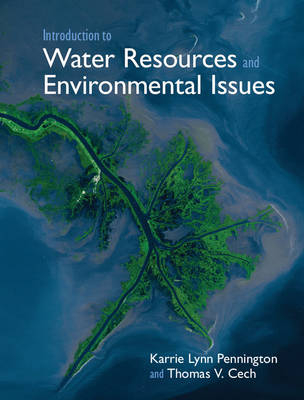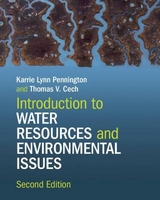
Introduction to Water Resources and Environmental Issues
Cambridge University Press (Verlag)
978-0-521-86988-1 (ISBN)
- Titel erscheint in neuer Auflage
- Artikel merken
How much water does the world need to support growing human populations? What factors influence water quality, droughts, floods, and waterborne diseases? What are the potential effects of climate change on the world's water resources? These questions and more are discussed in this thorough introduction to the complex world of water resources. The strength of the book is its coverage of the fundamentals of the science of water, aquatic ecology, geomorphology and hydrology, supplemented by internet resources and examples from water resource issues in the news to engage the student. The book begins with a short history of human use and influence on water, followed by chapters on the geomorphology, hydrology, chemistry, and biology of lakes, rivers, and wetlands. Major disease issues, worldwide water quality and quantity problems, and potential solutions are addressed. Water laws, water allocation, and the conflicts involved are discussed using US and international examples. Students in departments of environmental studies, life science, Earth science, and engineering will benefit from this broad survey of these crucial issues.
Karrie Lynn Pennington has been working with the United States Department of Agriculture's (USDA) Natural Resources Conservation Service, studying the impacts of land-use on water ecosystems since 1992. She studied biology at the University of North Texas, receiving a Bachelor of Arts degree, and completed a Master of Science in Soils from the University of Idaho in Moscow. She taught as a visiting professor at the same university until moving to Tucson, Arizona, where she taught for 3 more years. She received her Ph.D. in Soil and Water Science, .and moved east to the Mississippi Delta, completing her postdoctoral studies with the USDA's Agricultural Research Service. Thomas V. Cech has been the Executive Director of the Central Colorado Water Conservancy District in Greeley since 1982. He received his Bachelor of Science degree in Education from Kearney State College, and a Masters in Community and Regional Planning from the University of Nebraska-Lincoln. He has taught undergraduate and graduate-level water resources courses at the University of Northern Colorado and at Colorado State University. He has been honoured with the Groundwater Advocate Award from the National Groundwater Association, the National Headgate Award from the Four-States Irrigation Council, the Groundwater Foundation's Edith Stevens Groundwater Education Award, and the Universities Council on Water Resources Award for Public Service in Water Resources.
Preface; 1. Perspectives on water and environmental issues; 2. The water environment of early civilizations; 3. The hydrologic cycle; 4. Water quality; 5. Watershed basics; 6. Groundwater; 7. Lakes and ponds; 8. Rivers and streams; 9. Wetlands; 10. Dams and reservoirs; 11. Drinking water and wastewater treatment; 12. Water allocation law; 13. Roles of federal, regional, state, and local water management; 14. Water conflicts, solutions, and our future; References; Index.
| Erscheint lt. Verlag | 17.12.2009 |
|---|---|
| Zusatzinfo | 16 Tables, unspecified; 109 Halftones, unspecified |
| Verlagsort | Cambridge |
| Sprache | englisch |
| Maße | 195 x 252 mm |
| Gewicht | 1200 g |
| Themenwelt | Sachbuch/Ratgeber ► Natur / Technik ► Natur / Ökologie |
| Naturwissenschaften ► Biologie ► Ökologie / Naturschutz | |
| Naturwissenschaften ► Geowissenschaften ► Hydrologie / Ozeanografie | |
| Technik ► Umwelttechnik / Biotechnologie | |
| Weitere Fachgebiete ► Land- / Forstwirtschaft / Fischerei | |
| ISBN-10 | 0-521-86988-9 / 0521869889 |
| ISBN-13 | 978-0-521-86988-1 / 9780521869881 |
| Zustand | Neuware |
| Haben Sie eine Frage zum Produkt? |
aus dem Bereich



